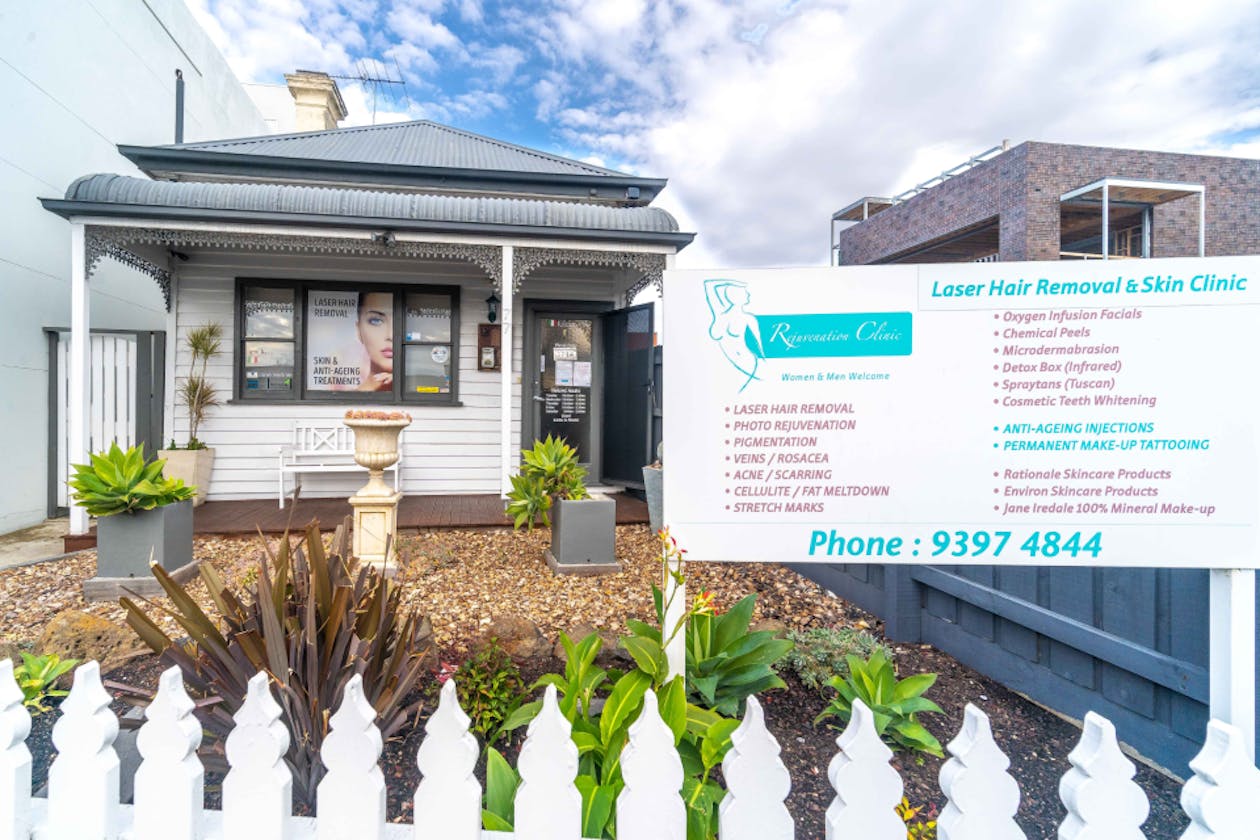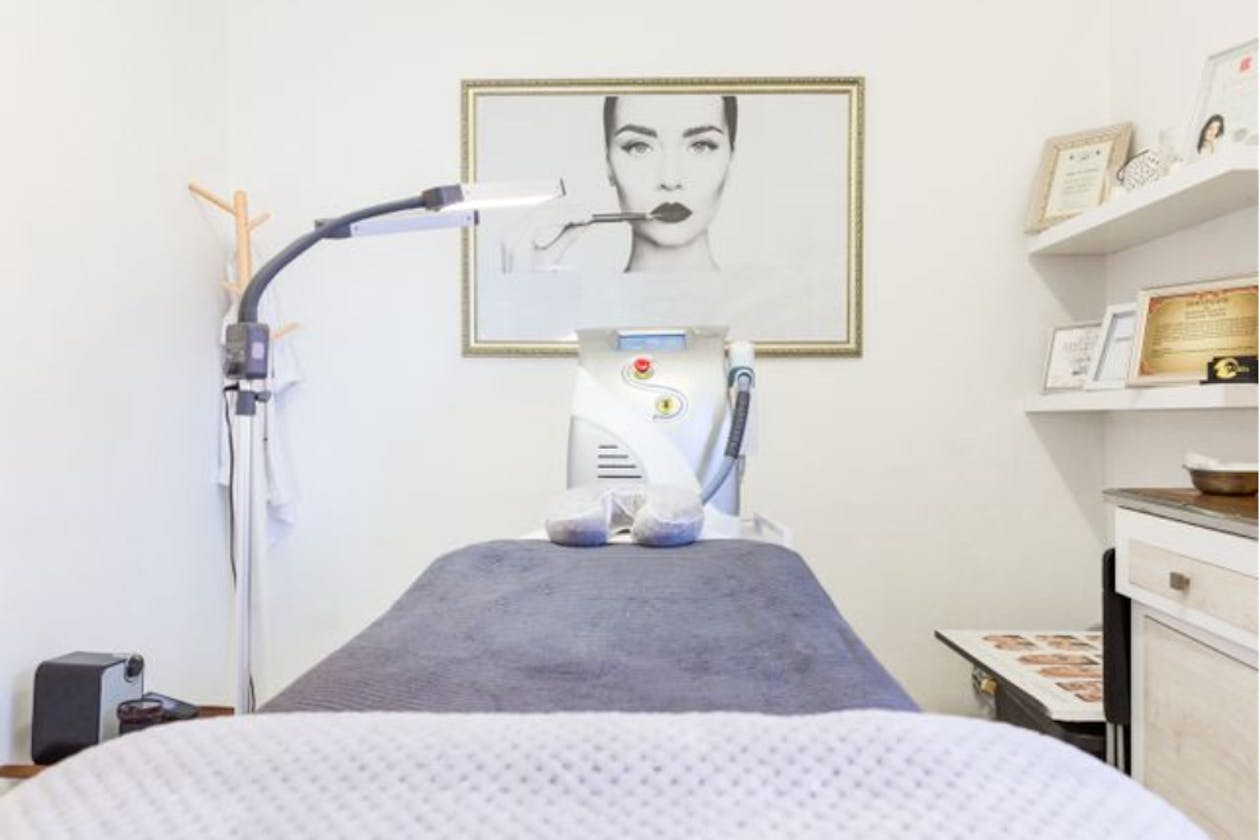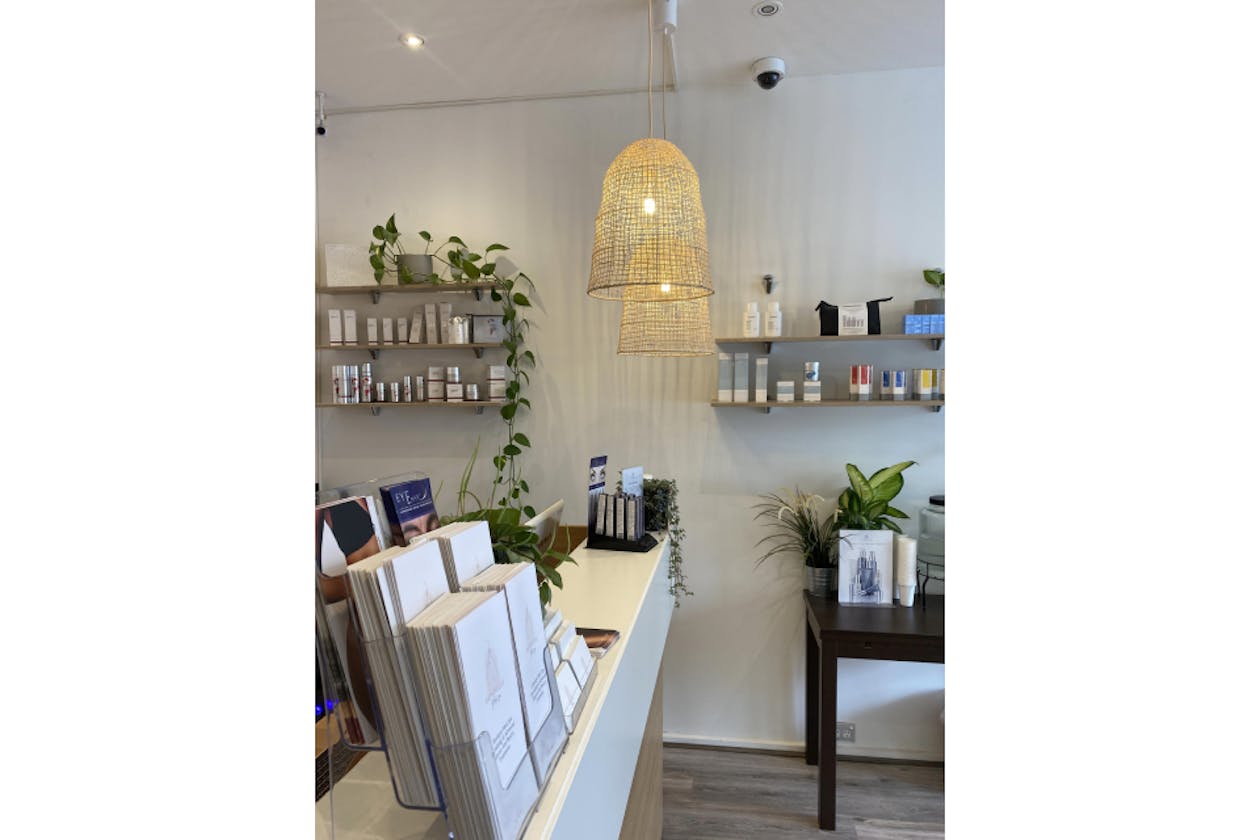
Face Peel Book your face peel appointment online and save
Top 20 Face Peel ClinicsFor more salons, check out Fresha’s list of Beauty Salons.
 258 Maribyrnong Road, Moonee Ponds 3039(67)Moonee Ponds is home to Liebe Wellness, a multi-faceted wellness hub with a holistic approach to wellbeing. Specialities include yoga, naturopathy, massage and hypnotherapy. Discover the tools you need to create the life you deserve!
258 Maribyrnong Road, Moonee Ponds 3039(67)Moonee Ponds is home to Liebe Wellness, a multi-faceted wellness hub with a holistic approach to wellbeing. Specialities include yoga, naturopathy, massage and hypnotherapy. Discover the tools you need to create the life you deserve!
Foresta Spa & Laser Clinic on A'Beckett
71-73 A'Beckett St, Melbourne CBD 3000(282)Foresta Spa & Laser Clinic is a Melbourne-based skincare clinic specialising in the latest aesthetic treatments, including non-surgical facelifts, facials, and lash extensions.
Mayfair Rejuvenation Clinic
77 Stevedore Street, Williamstown 3016(147)For expert Laser Hair Removal, visit Rejuvenation Clinic. On offer are Cosmetic Teeth Whitening, Photo Rejuvenation, and Laser Treatments for pigmentation.
Evolve Cosmetic Clinic
72 Makassar Way, Clarkson 6030(242)Evolve Cosmetic Clinic for quality, friendly skincare. For perfect skin, book in a Chemical Peel, Skin Needling, IPL Treatments or Microdermabrasion treatment.
Your Time Beauty
163 Pascoe Vale Road, Moonee Ponds 3039(47)Your Time Beauty in Moonee Ponds is your go-to when you need some ‘me time’ in the form of massage, waxing, facials, lash and brow maintenance and spa packages.
Gloss Beauty Salon
Shop 1A / 57 Minnamurra Circuit, Prestons 2170(1919)For all your skin, beauty and relaxation needs, look no further than Gloss Beauty Salon, conveniently situated on Minnamurra Circuit in Prestons NSW.
NV's Medispa
78 Railway Street, Altona 3018(85)NV's Medispa is a delight to visit. Offering facials, peels, body treatments, manicures and pedicures, waxing, massage, tanning and waxing for men and women.
CE Skin Aesthetics
Suite 201, Level 2, Chanel Building, 70 Castlereagh Street, Sydney CBD 2000(26)CE Skin Aesthetics is an advanced skin care centre offering standout beauty treatments to maintain and enhance your skin health and appearance in Sydney CBD.
Brow Artistry HQ
179 Bondi Rd, NSW, Bondi 2026(212)This phenomenal O’Brien Street studio in Bondi is a one-stop shop for all your lash, brow, facials, waxing and make-up needs. Indulge in a pampering today!
Dermal Boutique - Kogarah
2 / 55 President Avenue, Kogarah 2217(64)Dermal Boutique is a Kogarah-based beauty and hair removal provider specialising in unisex waxing and skin treatments. Live your life hair-free and glowing thanks to their services.
Beauty On Main
Shop 6/15 Tedder Avenue , Main Beach 4217(14)Beauty on Main have incredible facials. Indulge in a relaxing, deep cleansing, or anti-ageing treatment. Then top it off with a body polish and manicure.
The Queen Total Beauty
8 Woodland Street, Melbourne (Strathmore), Victoria, Strathmore 3041(193)Experience the ultimate relaxation with The Queen Beauty and Massage. Services include massage, eyelash extensions and facials to cater to all skin concerns.
Beauty By Mela
131 Union Road, Ascot Vale 3032(95)Beauty by Mela is an innovative beauty studio specialising in decadent treatments to refresh and revitalise the skin located inside Ascot Value Beauty, Ascot Value.
The CACI Clinic
Shop 2 / 210 Toorak Road, South Yarra 3141(20)CACI Rejuvenation Clinic offers the ultimate in relaxation and rejuvenation. Beauty treatments include CACI and Oxygen Infusing Facials, and face peels.
Elizabeth Skin Care
1 / 442 Darling Street, Balmain 2041(13)For beautiful skin, visit Elizabeth Skin Care. Try their signature My Payot Experience facial. Remove unwanted hair with electrolysis or IPL laser or sugaring.
Willow Skin and Beauty
747 Centre Road, Bentleigh East 3165(47)Beauty in Bentleigh East? Willow Skin and Beauty is dedicated to enhancing your natural features. With a team of highly skilled therapists and practitioners, you’ll be thrilled with the results from this gorgeous, professional salon.
Lavish Face and Body
248 Sunshine Avenue, Kealba 3021(130)Lavish Face and Body is a beauty studio in Kealba offering high quality skin and beauty treatments.
Precious Beautee
4 / 18A Hercules Street, Ashfield 2131(126)There's something for everyone at Precious Beautee, including amazing lash and brow treatments, eyelash extensions, waxing, and deluxe facial packages.
Aloha Skin & Beauty
5 / 13 Robertson Road, Killarney Vale 2261(84)Aloha Skin & Beauty is a Killarney Vale skin and beauty studio offering a variety of treatments to suit every skin.
Skindulge Medi Spa
746 Burke Road, Camberwell 3124(9)Skindulge Medi Spa is a luxury day spa devoted to the art of skin rejuvenation in Camberwell. The expert team are well-versed in all aspects of skin and beauty techniques and services.
#Face Peel
Isn't it funny how one of the most gruesome sounding beauty treatments is also one of the most effective? We're talking about the Face Peel, one of the many beauty therapies that originated in ancient Egypt.
Whilst you may think the popular lactic acid face peels of today are new the gorgeous Cleopatra got there first. She regularly bathed in milk because the Egyptians discovered it contained a natural exfoliating agent - lactic acid.
Lactic Acid Face Peel
Of course, few of us have the time or the inclination to soak in a bath of milk all day so a trip to the beauty salon seems a much better idea. Lactic acid-based face peels offer many benefits including unclogging the pores, reducing the appearance of fine lines and blemishes and generally rejuvenating the skin.
The term 'face peel' can mean two things: it could be an exfoliating treatment with no side effects or a treatment which encourages the skin to shed and renew itself over a few days.
Most quality beauty salons offer chemical peels. This involves applying a solution that causes the skin to blister and peel off. The newly exposed skin will be much smoother and less lined. A chemical peel is particularly useful around the mouth and can reduce the effects of sun damage.
Reduce Fine Lines and Wrinkles
A chemical peel can also reduce the appearance of scars, age spots, freckles and melasma and can even treat some forms of acne.
If you do book in for a chemical peel be prepared to take extra precautions in the sun afterwards. The newly exposed skin will be far more prone to burning. You should also discuss the treatment with your doctor as it's not suitable for people on some medications.
During the treatment itself, you're likely to experience a burning or stinging sensation. It's a bit like sunburn. Cold compresses can be applied or you may be given pain medication during or after the session.
Salon Peels
Different depths of chemical peel are available depending on the condition being treated. Just remember that the deeper the peel, the longer it will take to heal. A deep peel will also require the area treated to be bandaged.
The chemical peel is probably the most extreme treatment. Most salons use Alpha hydroxy acids (from sugar cane), Malic acid (apple juice) and Cleopatra's favourite, Lactic acid. This type of face peel chemically exfoliates the skin, sloughing off dead skin cells and promoting new cell growth.
Some peels, such as Glycolic acid, are also believed to stimulate collagen production which helps fight the signs of ageing.
For acne sufferers, Salicylic acid is a great addition as it is both anti-inflammatory and anti-bacterial. It's very useful for treating sun damage, too.
Signature Face Peel
Lactic acid exfoliates and moisturises the skin and promotes the production of Hyaluronic acid. This stimulates the production of good oils which create a barrier on the skin's surface and locks in moisture.
Lactic acid is great if you have dry dull skin. Other ingredients may be added to it to boost its potency, including Vitamin A. It is quite common for salons to create their own signature face peel by infusing vitamins and antioxidants.
Laser Face Peel
Laser face peels are becoming very popular as a means of resurfacing the skin. This is particularly useful if you need to target specific areas as the laser is very precise. A laser face peel would be helpful to treat deeper wrinkles and lines and pigmentation. It does, however, require more downtime and is generally more expensive.
There are certainly plenty of options so your choice will come down to budget, time and what condition you are treating. The first step is to book a consultation through Bookwell and discuss the various treatments at a professional skin clinic.